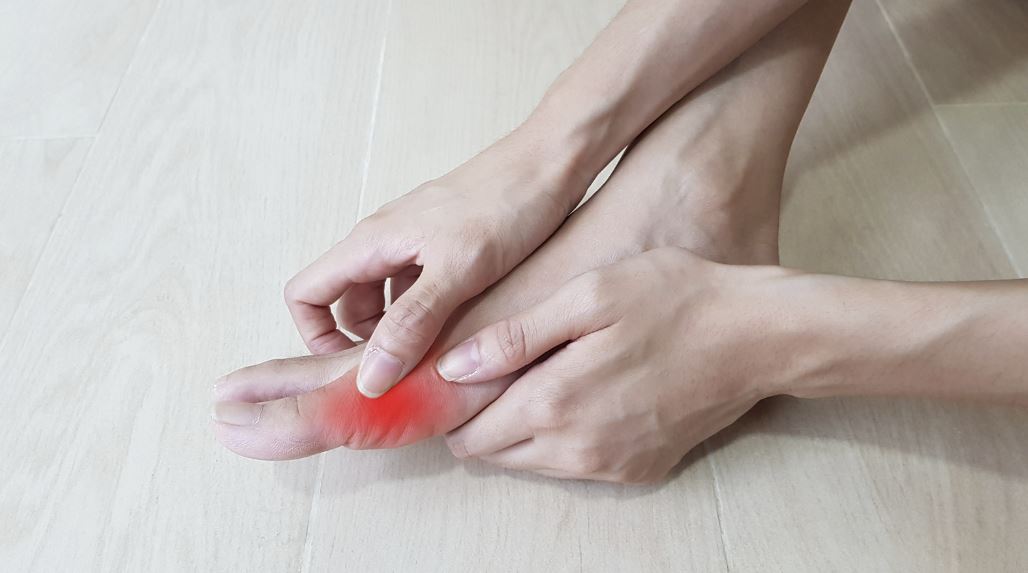
Mr Paul Hamilton
Specialist expertise: Foot and Ankle Conditions, Orthopaedics, Sports Injuries, Upper and Lower Limb Tendon Injuries, Foot & Ankle, Bunions, Arthritis, Foot Surgery, Shockwave Therapy, Morton's Neuroma.
Osteoarthritis is a form of arthritis, but with so many different manifestations of arthritis, what are the causes and symptoms of this particular form of the ailment? Mr Paul Hamilton, Consultant Orthopaedic Surgeon, takes us through the key elements of osteoarthritis.

Osteoarthritis, or ‘wear and tear’, is a degenerate joint condition characterised by loss of cartilage in a joint. Symptoms may include pain, stiffness, reduced range of movement or bone growth around the affected joint. It is common in the feet, hands, hips, knees, and spine and is more common in the elderly.
Rheumatoid arthritis is an autoimmune disorder in which the body’s immune system attacks the lining of the joints (synovium). Multiple joints can be affected at the same time, and it can cause pain, swelling, stiffness and loss of function. It can also affect other systems in the body and typically can affect the same joints on both sides of the body.
Typically, treatments for osteoarthritis are guided by an orthopaedic surgeon, and for rheumatoid arthritis are guided by a rheumatologist unless surgery is required in the advanced stages.
Symptoms of foot and ankle arthritis include pain, reduction in function and stiffness which is often worse initially on walking after sitting and may cause a limp. The pain can be worse after periods of activity and fluctuates from day to day. When severe it can cause night pain. There is reduced range of motion of the affected joint, and there may be symptoms such as crepitis (crunching) or popping of the joint and can occasionally cause the ankle to ‘give way’. As the arthritis progresses, there may be deformity in the joint or the formation of bony lumps. Examining or pressing the joint may also be painful.
Osteoarthritis is commonly diagnosed by a detailed history, physical examination by an orthopaedic surgeon and subsequent imaging tests such as X-ray, CT or MRI scans. As part of the history, details of previous injuries, interventions or treatments, and general medical issues will guide the diagnosis and help plan the management.
X-rays can often provide the diagnosis, although standing CT scans can now provide a more detailed assessment of the joints, the structure of the foot and any bony abnormalities. They allow detailed assessment while the body is functioning while weightbearing and can pick up abnormalities that may not be visible on traditional X-rays and CT scans. MRI scans are often useful in addition to guide treatment and can be helpful in establishing any damage to ligaments and tendons within the foot.
Surgical treatments should be patient focused on reducing pain and improving function and should be guided by an experienced foot and ankle orthopaedic surgeon. The options depend on the symptoms, the joint involved and the extent of the arthritis.
Arthroscopic surgery – is a minimally invasive surgery where a small camera is inserted into the joint to diagnose and treat problems and is common used around the ankle joint.
Minimally invasive surgery – removes extra bone through small holes under X-ray guidance and is commonly used on the big toe joint.
Osteotomy – is a surgical procedure which involves cutting and realigning the bone to relive pressure on the affect joint.
Arthrodesis or fusion surgery – this removes the joint and fused or fixes the joint to improve stability and eliminate pain and is often used for severe arthritis.
Joint replacement – may be used on selected patient with ankle arthritis to improve pain and maintain some movement in the joint.
Recovery time depends very much on the procedure and the extent of the arthritis. Minimally invasive surgery such as arthroscopies usually require two weeks of rest before rehabilitation can begin. It may take several months for the full benefit of surgery is achieved.
Osteotomies or fusion surgery around the big toe often require two weeks of complete rest and another four weeks in a special shoe before the rehabilitation can begin. Once again, it may take several months before the full benefit of surgery is achieved.
Surgery such as ankle replacement or fusion surgery may take longer to recover and may involve longer times of immobilisation and not weightbearing through the operated leg, and it may take many months to achieve the full benefit of surgery.
Prior to surgical intervention there are several options that are recommended that may delay or prevent the need for surgery. Non-surgical management of arthritis include
Expert review by an orthopaedic foot and ankle surgeon can help guide the appropriate treatment. This may involve referral to other professionals such as a podiatrists or physiotherapists to optimise the non-operative managements and discuss if surgery is appropriate.
Mr Paul Hamilton is an Orthopaedic Surgeon at OneWelbeck Orthopaedics. Mr Paul Hamilton leads a foot and ankle sports injury and heel pain clinic, and also sets up and runs a diabetic multi-disciplinary foot clinic.